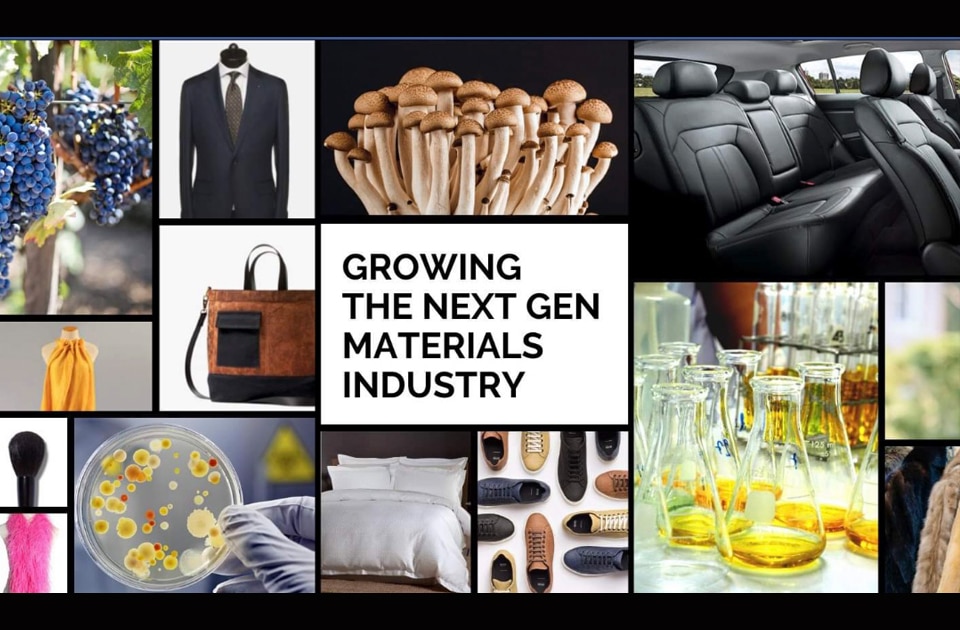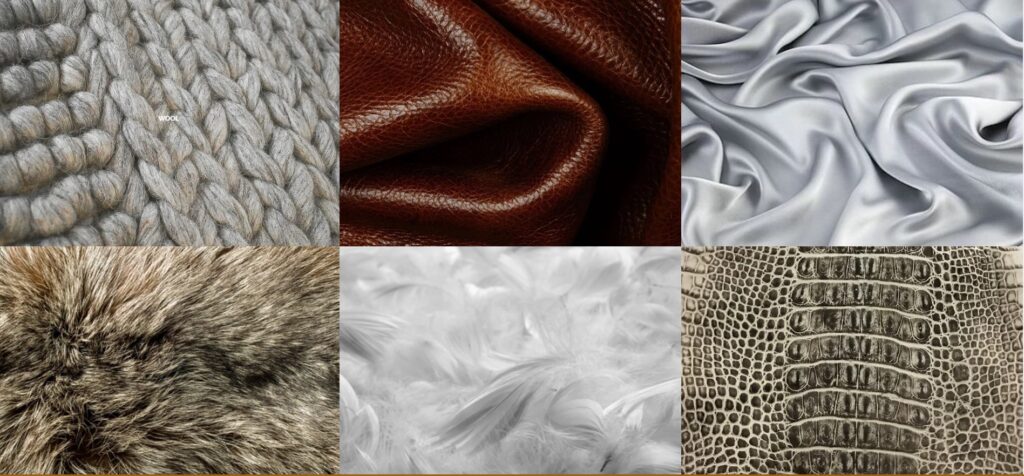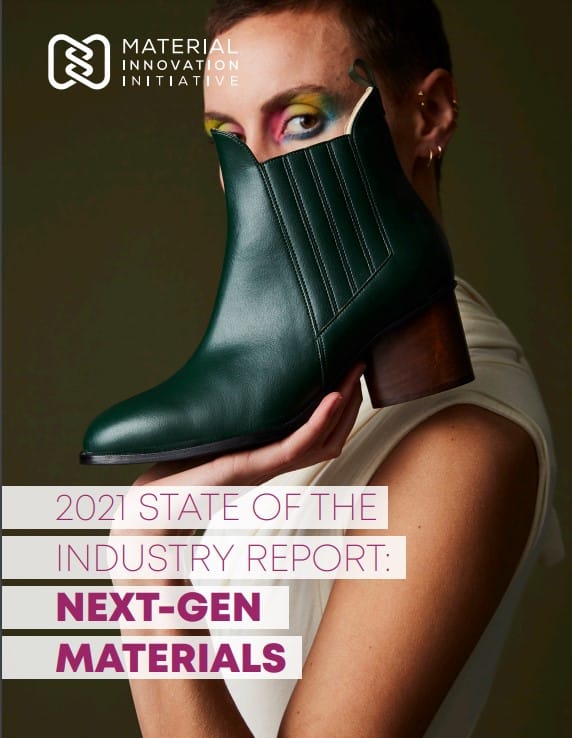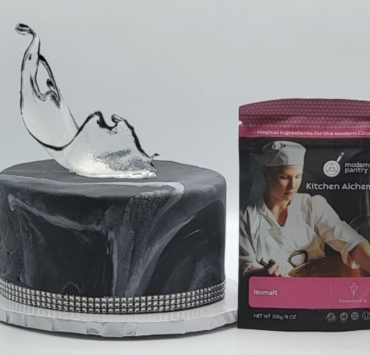Material Innovation: the end of leather, wool and fur

The Material Innovation Conference is building a cruelty-free future by bringing together disruptors of animal-based material industries

Time to go beyond food! Veg Tech has been disrupting the animal agriculture industry by providing alternatives to meat and dairy from plants, fruits, nuts, mushrooms, algae and even bacteria. Now, the next frontier in this battle for a compassionate culture moves beyond food to materials. Experts on how to evolve beyond leather and fur for shoes, coats, cars and more are converging to discuss tactics and logistics. Scientists and entrepreneurs from all over the world will converge for the Material Innovation Conference to take place, virtually, on May 18th and 19th, 2022. The public is invited to register and attend.
A Material Revolution
Next-generation materials that come from non-animal biological sources will revolutionize many industries. Many have been already discovered, others are in development, and most still need to be scaled up so they can compete with their animal-based equivalents such as leather, wool, silk, down, fur or exotic skins. The conference aims to advance the next-gen materials industry by providing vital expertise and bringing together key players along the innovation path from concept to commercialization.
Heavy Hitters in Fashion are On Board
The event will bring together an industry ecosystem of retailers, brands, entrepreneurs, scientists, investors, academia, business incubators, raw material suppliers, mills, and nonprofits to explore opportunities and challenges and accelerate the commercialization of next-gen materials. Some of the speakers include Patagonia, Lululemon, and Allbirds.
Nicole Rawling is the co-founder and CEO of the Material Innovation Initiative (MII), the organization behind the conference. It is a nonprofit that accelerates the development of high-performance, eco-friendly, and animal-free materials for the fashion, automotive, and home goods industries.
UnchainedTV‘s Jane Velez-Mitchell interviewed Nicole Rawling, an in-depth conversation you can watch here:
Next-Gen Materials

Eco-tech experts predict that, in the not too distant future, animals will not be used in any consumer goods. Food is just one part of it. The race is on to find scalable alternatives to other types of consumables. Already durable, leather-like materials are being made from cactus, pineapple and even grapes.
Rawling explains why it’s all about alternatives:
“Most people understand the differences in food and why we’re moving away from animal-based meats, eggs, and dairy. I will say the fashion, automotive, and home goods industries, are so much more excited about the next-gen materials… we are seeing a lot of excitement from major automotive companies to fashion brands, even top luxury fashion brands.”
Next-gen material advocates are especially focused on replacing leather as leather involves the killing of the greatest number of animals.
“I think sometimes people do forget when they’re trying to make their own changes in their lives to move away from animal exploitation that these materials do require the killing of animals. And, in most cases, they are co-products, meaning they’re very valuable sources of income for animal agriculture.”
It’s not only about animal suffering. Finding next-gen, animal-free materials will address the environmental crisis too:
“Animal-based materials tend to be the worst for the environment and for the same reason that we know animal-based foods are terrible for the environment. All of the resources that need to go into, say, growing that cow, for example, for beef, all of the methane that comes out of that animal. The same applies to leather.
“A lot of these companies are understanding the impact on the environment from these animal-based materials. And I think consumers are seeing that as well.” – Nicole Rawling, CEO of the Material Innovation Initiative
Nobody Needs the Old-Gen Materials

Next-Gen material proponents tend to speak in futuristic terms. Just as gas lamps gave way to the electric light bulb, so -they argue – we should use science and technology to move toward modern products that are simply superior to cow’s leather, which requires lots of chemicals in the tanning process.
“People forget leather is skin. If you encountered dead animals in the forest, their skin would decompose. There are generally around 250 chemicals that go into the leather tanning process to stop it from degrading.” – Nicole Rawling, CEO of the Material Innovation Initiative
Rawling suggests a look at history informs us of why we need to move beyond animal skins in the 21st century.
“We didn’t choose leather because it’s the absolute best possible material to create a car seat, a bag, shoes or belts. We chose it because it happened to be left over when we killed animals thousands of years ago. At that time, we couldn’t waste anything. So, we just continued using that thousand-year-old technology and materials. Whereas now, why would we do that when we can do something so much better?”
Material Innovation Initiative sees plastic as old-gen material now:
‘If we want to make a big positive impact on the environment, we also can’t just move away from animals and move to petroleum-based sources. So, we think the industry needs to move away from the ‘pleathers’ as well as from the animals. That’s why we’re calling it next-gen. This is the future of materials and the more we can move away from that source the better.”
Where Do Next-Gen Materials Come From?

There are all types of new “leather-like” materials being developed which do not come from plastic, but from all sorts of biological sources — and are therefore more sustainable and less polluting. For example, we have leather-like materials that even come from fungi, including mushrooms.
“Hermes, one of the top French luxury brands in the entire world, has partnered with a company called Mica Works that is creating leather out of mycelium. Mycelium is the root structure of mushrooms. Mica Works leather material is only about 2%, maybe 1% petrochemicals.”
Fungi have been developed as a material source for many types of applications, such as packaging or fashion items. Mushrooms grow by actually taking water and pushing it into the tip of the hyphae, which is the single unit of the mycelium. The millions of microscopic fibers connecting make the mycelium mass can insert incredible pressure giving the product sturdiness. And they have a hydrophobic coating that repels water. You can also make mycelial foam, a very soft and flexible material.
Materials Innovation Initiative has produced a study titled State of the Industry Report that talks about all the new next-gen materials. They found a total of 95 next-gen material companies, 67 focusing on biomimicry of animal leather, 12 on silk, 7 on wool, 7 on fur, 6 on down, and one on exotic skins. Examples of different non-animal sources these companies use are pineapple (Piñatex® by Ananas Anam), grape (by Vegea), mango (by Fruitleather Rotterdam), and apple (by Frumat).
“Many top automotive companies are exploring next-gen leather. Bentley announced a partnership with a next-gen material company. I know Porsche and Land Rover have worked on alternatives.” – Nicole Rawling, CEO of the Material Innovation Initiative
And, of course, Tesla is credited with making vegan leather car seats all the rage.
We Are Not Quite There Yet

The difference between the new alternative food market and the next-gen materials market is time. The former is ahead as it started earlier.
“For consumers, unfortunately, there’s very little on the market. Innovation takes time. There are a number of companies who’ve been working on this for a while, but it does take time to develop the right formulas and the right approach to these materials. And then, scaling up and creating production facilities.”
But this does not mean that it will not happen. Perhaps more than with food, there is a demand for these alternatives:
“The demand is there. We actually did some studies on both US consumers and Chinese consumers. Specifically on next-gen leather. We asked US consumers if they would purchase next-gen leather, and 94% of them said they were likely to purchase it. 45% said they were highly likely to purchase it and 39% said they would even pay more for next-gen leather.”
Innovators know about the consumer interest because companies are selling out as fast as they can produce.
“Many companies have been working on this for a while, even in the past decade, and their products are coming to market now, but they are really sold out for months, if not years. There’s so much demand from the brands. What we need to see now is just more investment in the industry.
“I would say we’re about five years behind the food industry. We’ve done an industry analysis and we think the investment is increasing significantly.” – Nicole Rawling, CEO of the Material Innovation Initiative
Details about the online Material Innovation Conference can be found at materialinnovation.org/conference
What's Your Reaction?
Jordi Casmitjana is a vegan zoologist and author.









